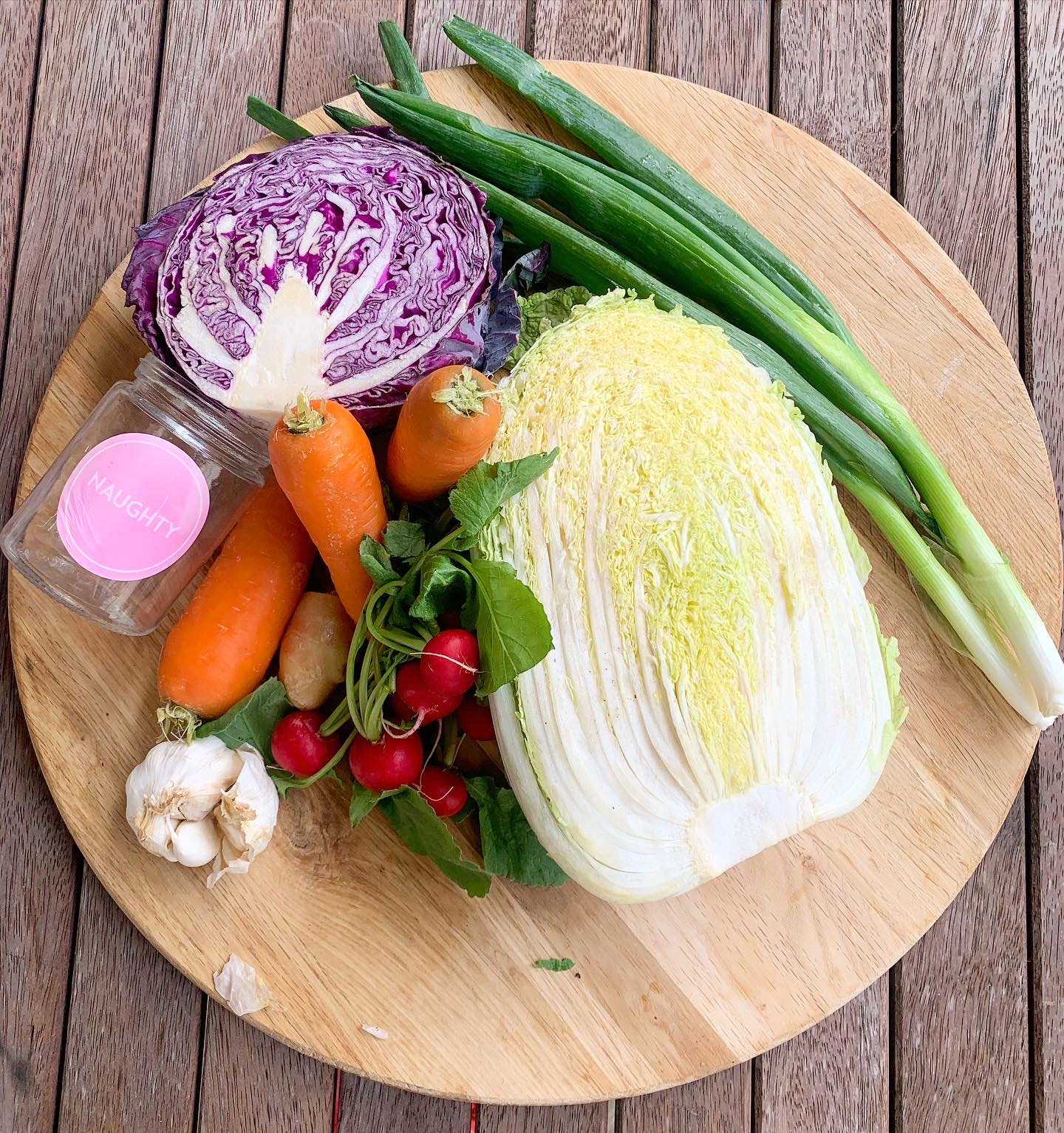
Wash cabbage leaves. Then cut the cabbage lengthwise into quarters and remove the cores. Chop it up into bite size pieces. Put the cabbage and salt in a bowl and massage the salt into the cabbage.
Pour 500ml of water over the cabbage and salt mix and submerge the cabbage in the liquid (you can use a plate on top to help submerge the cabbage). Let it soak for 2 hours.
Drain the cabbage and rinse well! Really try to remove all the salt and excess liquid from leaves (you may want to use a salad spinner) before placing back in a bowl.
Add all toppers to the bowl and stir in well. Use your hands. Next transfer the mixture to your 500ml glass jar. In the jar you want to make sure all the vegetables are submerged in the juice. Use your hands to push all the vegetables down.
Screw the lid on and leave it at room temperature (ideally 18-22 degrees celcius), out of direct sunlight. Each day check on your kimchi and release some build up gas by untwisting the lid and letting a little out. After 3 days your kimchi is ready for its first taste.
Pop your kimchi in the fridge now and it will continue to develop for 3 weeks. Keep the lid on. Enjoy with cheese and crackers, on toast with eggs and in salads. Yum, yum, yum.

Stay up to date with the latest news, promotions and offers.